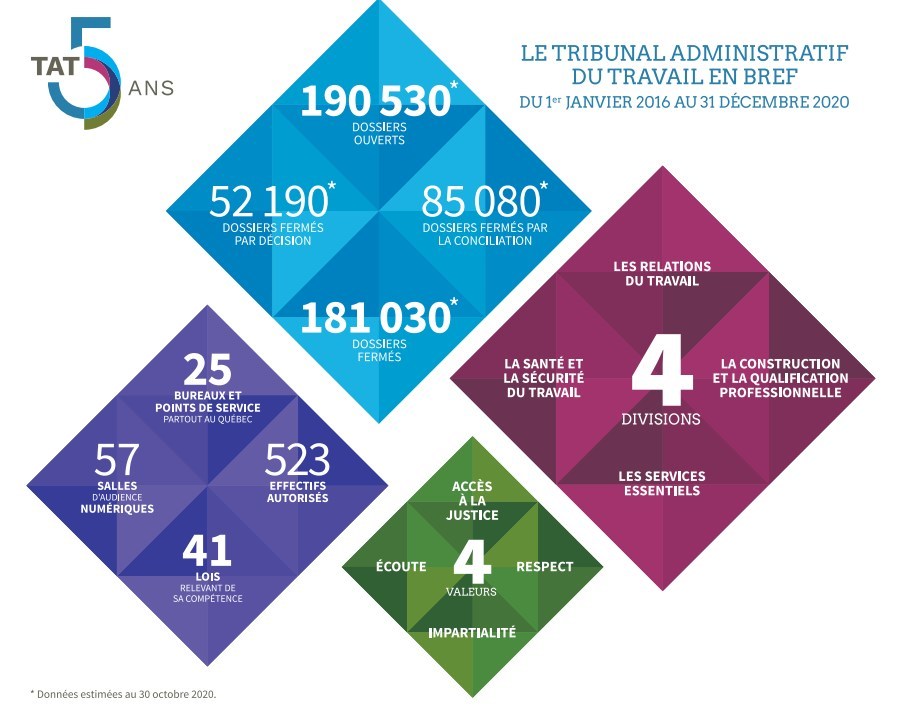This new year marks the 5e anniversary of the creation of the Administrative Labor Tribunal, which has been able to stay the course on its mission while adapting to legislative and technological changes as well as to the new realities of the world of work.
Resulting from the merger of the Commission des lésions professionnelles (CLP) and the Commission des relations du travail (CRT), the Administrative Labor Tribunal (TAT) was created on 1is January 2016. Its mission was to rule on numerous appeals related to the world of work, provided for in some forty laws. To guide its activities, the TAT has a vision: a unified, accessible and avant-garde tribunal that offers citizens quality services in all regions of Quebec.
Harmonization of operations
The Tribunal then sets in motion a vast process of harmonizing its operations. It develops policies and directives applicable to its four divisions: occupational health and safety; labor relations; essential services; construction and professional qualification. It adopts its rules of evidence and procedure. It defines the guidelines for the dissemination of the decisions it renders. It trains some of its administrative judges to sit in several divisions. It ensures that information is gathered on its platforms and communication tools (websites and intranet, computer system, etc.).
Concerned about maintaining quality services for citizens, the TAT recruits and trains new administrative judges, conciliators and employees to compensate for the numerous retirements.
Cutting-edge technological solutions
Wishing to make the TAT an avant-garde tribunal, the management relies on cutting-edge technological solutions, including the use of videoconferencing and the development of digital courtrooms. “This strategy will have allowed us to have a head start when it was necessary to adapt to the new constraints linked to the COVID-19 pandemic, both for hearings and for conciliation sessions”, proudly emphasizes the president, Lucie Nadeau.
40,000 files per year
The implementation of all these actions over the past five years represents considerable efforts on the part of many people who are committed to providing quality services to citizens by handling nearly 40,000 cases each year.
After five years of activity, the Tribunal has reached a turning point requiring a change in its visual identity. Starting this year, it will adopt a new graphic image that it will gradually deploy on its communication tools.
–


